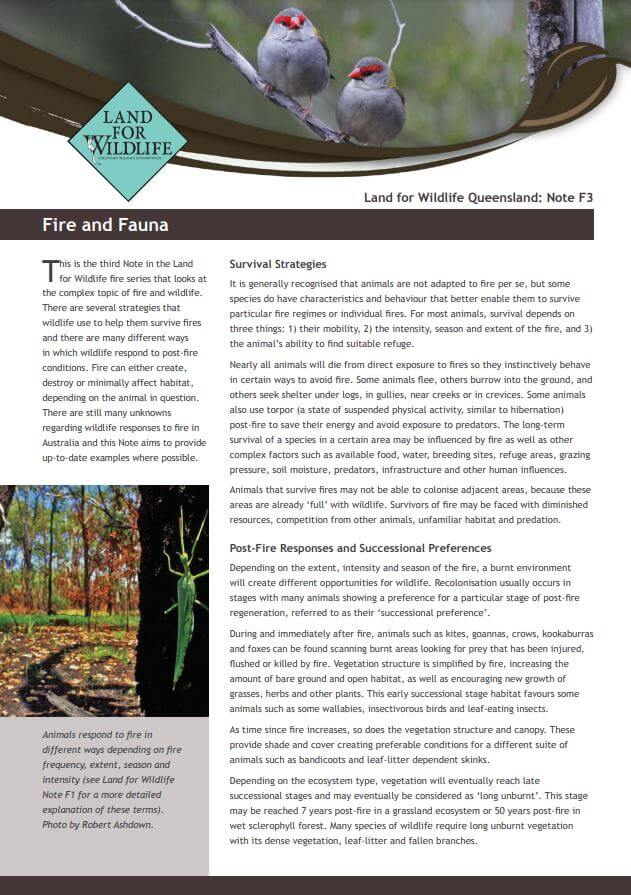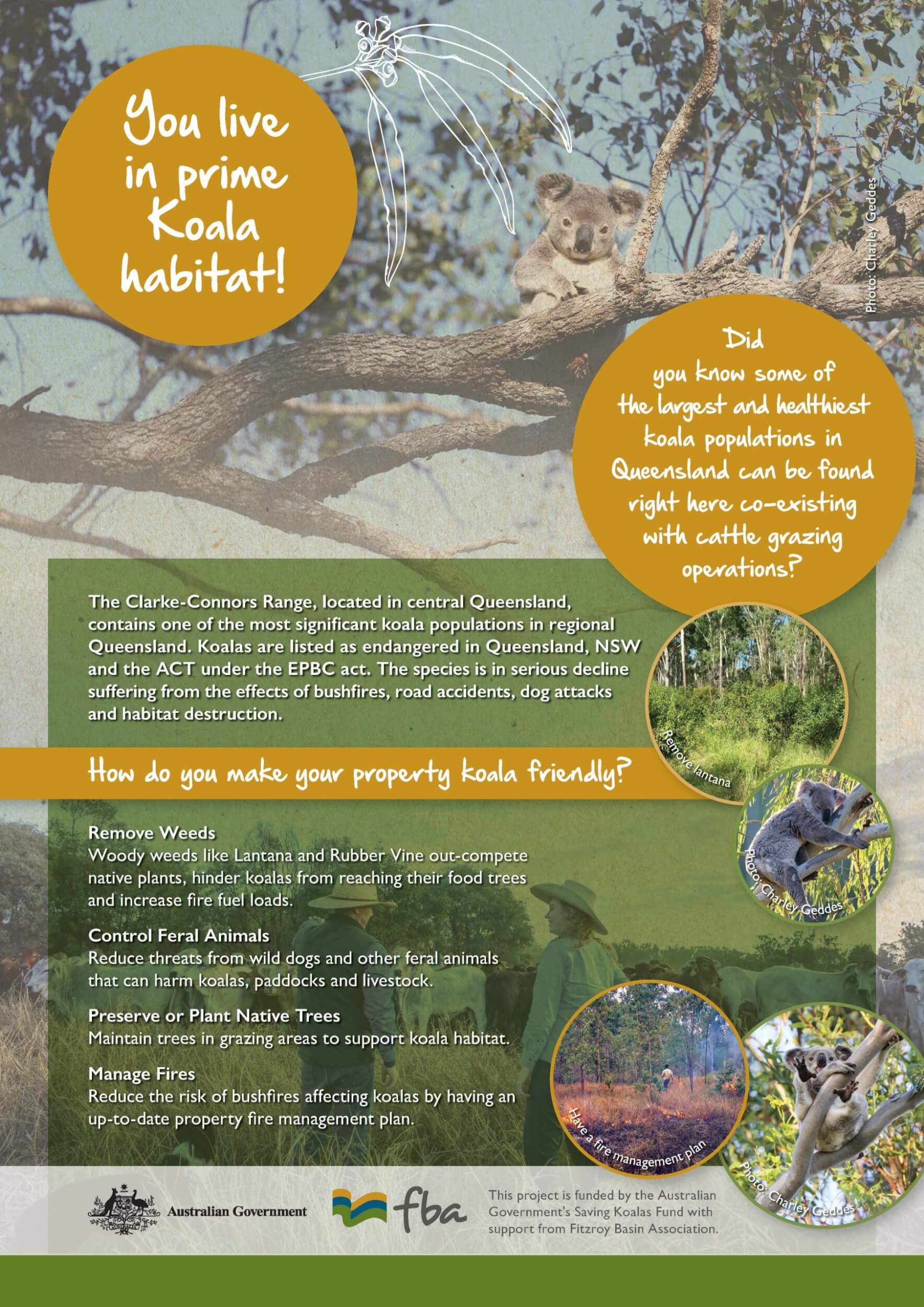Resources library - Factsheets
Factsheets Resources
Fire in the Australian Landscape
The history of fire in the Australian landscape

This is the first of four Notes in the Land for Wildlife fire series. This Note looks at the history of fire in the Australian landscape and also introduces key terms and concepts regarding fire ecology and fire management in Southeast Queensland.
Fire in the Australian Landscape
The complex topic of fire and wildlife

This is the third Note in the Land for Wildlife fire series that looks at the complex topic of fire and wildlife. There are several strategies that wildlife use to help them survive fires and there are many different ways in which wildlife respond to post-fire conditions. Fire can either create, destroy or minimally affect habitat, depending on the animal in question. There are still many unknowns regarding wildlife responses to fire in Australia and this Note aims to provide up-to-date examples where possible.
Fire in the Australian Landscape
The practicalities involved in planning for fire and reducing the risk of bushfire on your property

This is the fourth Note in the Land for Wildlife fire series that looks at the practicalities involved in planning for fire and reducing the risk of bushfire on your property. This Note is relevant for both landholders who choose to burn vegetation on parts of their property and landholders who choose not to burn. Being fire aware is applicable to all land types including farms, conservation properties, lifestyle blocks and government land. It is best to be prepared for fire and this Note introduces some actions that all landholders can take.
Koala Habitat Fact Sheet
Koala Habitat Fact Sheet

Did you know some of the largest and healthiest koala populations in Queensland can be found right here co-existing with cattle grazing operations? Learn how you can make your grazing property koala friendly and what the benefits are of doing so.
Fire in the Australian Landscape
The effects of fire on plants, fungi and vegetation communities

This is the second Note in the Land for Wildlife fire series and looks at the effects of fire on plants, fungi and vegetation communities. Plants and fungi respond in different ways to fire; some species regenerate quickly after fire, others undergo mass flowering and fruiting, some germinate, and others contract or perish from exposure to fire. For some plant and fungi species, fire plays an important role in their lifecycle. At a broader scale, fire can be an important determinant of vegetation communities and can help form boundaries between vegetation communities.
Carbon Farming Flyer
Carbon Farming for central Queensland Landholders

Carbon farming is any agricultural practice that increases or preserves carbon in soil and vegetation. Scientists have observed that since the industrial revolution there is more carbon in the atmosphere. There are many benefits to be gained through carbon farming including increased productivity, income diversification, profitability and a healthier planet. By working with FBA, landholders have an opportunity to implement practices that increase and preserve carbon in plants and soils. The investment in carbon credits accrued through carbon farming is emerging as a priority for key industries such as transport, mining and aviation. The carbon market is providing a unique opportunity for landholders to improve their land condition as well as gain returns on productive, unproductive or unused land.









